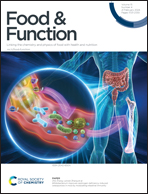Effects and mechanisms of anti-diabetic dietary natural products: an updated review
Abstract
Diabetes is a global public health issue, characterized by an abnormal level of blood glucose. It can be classified into type 1, type 2, gestational, and other rare diabetes. Recent studies have reported that many dietary natural products exhibit anti-diabetic activity. In this narrative review, the effects and underlying mechanisms of dietary natural products on diabetes are summarized based on the results from epidemiological, experimental, and clinical studies. Some fruits (e.g., grape, blueberry, and cherry), vegetables (e.g., bitter melon and Lycium barbarum leaves), grains (e.g., oat, rye, and brown rice), legumes (e.g., soybean and black bean), spices (e.g., cinnamon and turmeric) and medicinal herbs (e.g., Aloe vera leaf and Nigella sativa), and vitamin C and carotenoids could play important roles in the prevention and management of diabetes. Their underlying mechanisms include exerting antioxidant, anti-inflammatory, and anti-glycation effects, inhibiting carbohydrate-hydrolyzing enzymes, enhancing insulin action, alleviating insulin resistance, modulating the gut microbiota, and so on. This review can provide people with a comprehensive knowledge of anti-diabetic dietary natural products, and support their further development into functional food to prevent and manage diabetes.

- This article is part of the themed collection: Food & Function Review Articles 2023


 Please wait while we load your content...
Please wait while we load your content...